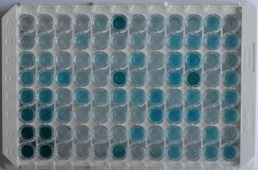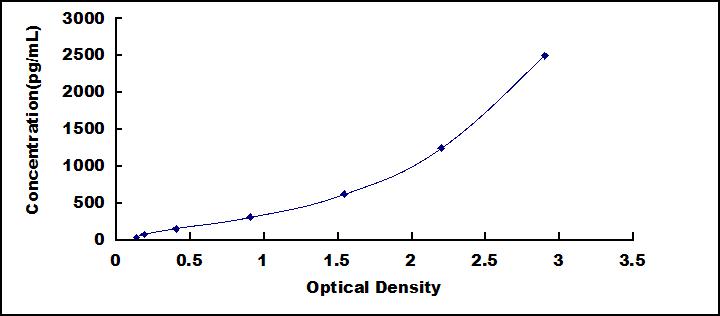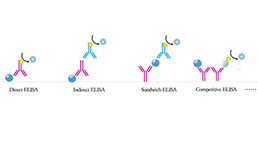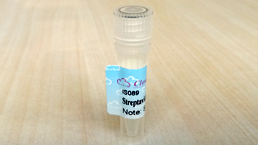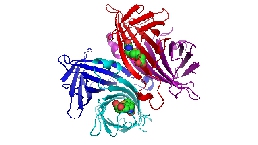Packages (Simulation)

Reagent Preparation

Image (I)
Image (II)
Certificate


ELISA Kit for N-Terminal Pro-Atrial Natriuretic Peptide (NT-ProANP)
NT-Pro-ANP; N-ANP
- Product No.SEA484Hu
- Organism SpeciesHomo sapiens (Human) Same name, Different species.
- Sample Typeserum, plasma, tissue homogenates, cell lysates, cell culture supernates and other biological fluids
- Test MethodDouble-antibody Sandwich
- Assay Length3h
- Detection Range39-2,500pg/mL
- SensitivityThe minimum detectable dose of this kit is typically less than 17pg/mL.
- DownloadInstruction Manual
- UOM 48T96T 96T*5 96T*10 96T*100
- FOB
US$ 370
US$ 528
US$ 2376
US$ 4488
US$ 36960
For more details, please contact local distributors!
Specificity
This assay has high sensitivity and excellent specificity for detection of N-Terminal Pro-Atrial Natriuretic Peptide (NT-ProANP).
No significant cross-reactivity or interference between N-Terminal Pro-Atrial Natriuretic Peptide (NT-ProANP) and analogues was observed.
Recovery
Matrices listed below were spiked with certain level of recombinant N-Terminal Pro-Atrial Natriuretic Peptide (NT-ProANP) and the recovery rates were calculated by comparing the measured value to the expected amount of N-Terminal Pro-Atrial Natriuretic Peptide (NT-ProANP) in samples.
| Matrix | Recovery range (%) | Average(%) |
| serum(n=5) | 96-105 | 101 |
| EDTA plasma(n=5) | 92-101 | 96 |
| heparin plasma(n=5) | 98-105 | 101 |
Precision
Intra-assay Precision (Precision within an assay): 3 samples with low, middle and high level N-Terminal Pro-Atrial Natriuretic Peptide (NT-ProANP) were tested 20 times on one plate, respectively.
Inter-assay Precision (Precision between assays): 3 samples with low, middle and high level N-Terminal Pro-Atrial Natriuretic Peptide (NT-ProANP) were tested on 3 different plates, 8 replicates in each plate.
CV(%) = SD/meanX100
Intra-Assay: CV<10%
Inter-Assay: CV<12%
Linearity
The linearity of the kit was assayed by testing samples spiked with appropriate concentration of N-Terminal Pro-Atrial Natriuretic Peptide (NT-ProANP) and their serial dilutions. The results were demonstrated by the percentage of calculated concentration to the expected.
| Sample | 1:2 | 1:4 | 1:8 | 1:16 |
| serum(n=5) | 79-90% | 82-102% | 91-105% | 95-104% |
| EDTA plasma(n=5) | 97-104% | 87-101% | 79-98% | 80-99% |
| heparin plasma(n=5) | 82-92% | 97-105% | 89-101% | 82-101% |
Stability
The stability of kit is determined by the loss rate of activity. The loss rate of this kit is less than 5% within the expiration date under appropriate storage condition.
To minimize extra influence on the performance, operation procedures and lab conditions, especially room temperature, air humidity, incubator temperature should be strictly controlled. It is also strongly suggested that the whole assay is performed by the same operator from the beginning to the end.
Reagents and materials provided
| Reagents | Quantity | Reagents | Quantity |
| Pre-coated, ready to use 96-well strip plate | 1 | Plate sealer for 96 wells | 4 |
| Standard | 2 | Standard Diluent | 1×20mL |
| Detection Reagent A | 1×120µL | Assay Diluent A | 1×12mL |
| Detection Reagent B | 1×120µL | Assay Diluent B | 1×12mL |
| TMB Substrate | 1×9mL | Stop Solution | 1×6mL |
| Wash Buffer (30 × concentrate) | 1×20mL | Instruction manual | 1 |
Assay procedure summary
1. Prepare all reagents, samples and standards;
2. Add 100µL standard or sample to each well. Incubate 1 hours at 37°C;
3. Aspirate and add 100µL prepared Detection Reagent A. Incubate 1 hour at 37°C;
4. Aspirate and wash 3 times;
5. Add 100µL prepared Detection Reagent B. Incubate 30 minutes at 37°C;
6. Aspirate and wash 5 times;
7. Add 90µL Substrate Solution. Incubate 10-20 minutes at 37°C;
8. Add 50µL Stop Solution. Read at 450nm immediately.
GIVEAWAYS
INCREMENT SERVICES
| Magazine | Citations |
| European Veterinary Conference | Atrial natriuretic peptides detect cardiac dilatation Biblio.ugent: 3227757 |
| Echocardiography | Prediction of postoperative atrial fibrillation with left atrial mechanical functions and NT‐pro ANP levels after coronary artery bypass surgery: A three‐dimensional … Pubmed:29457260 |
| Циррозы печени вирусной этиологии у детей | |
| Van Veterinary Journal | Van Veterinary Journal |
| Journal of the American Heart Association | Recombinant Soluble Corin Improves Cardiac Function in Mouse Models of Heart Failure 33759549 |

